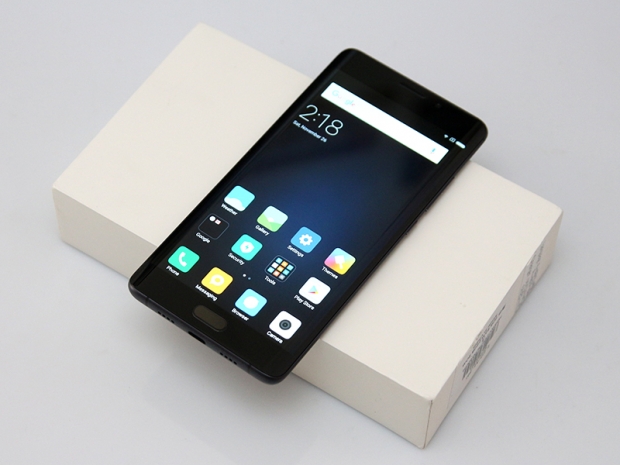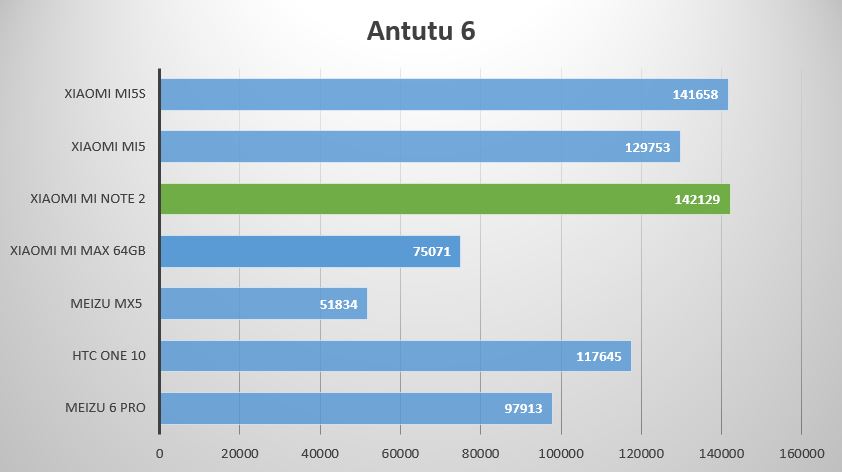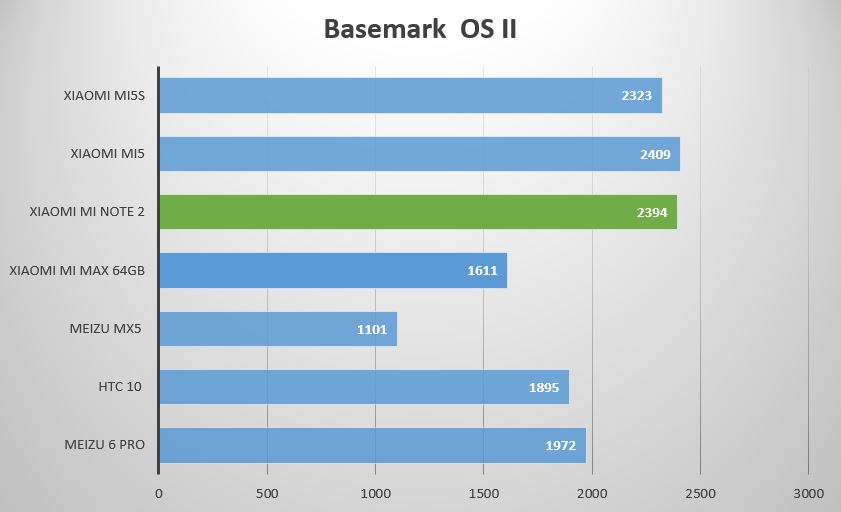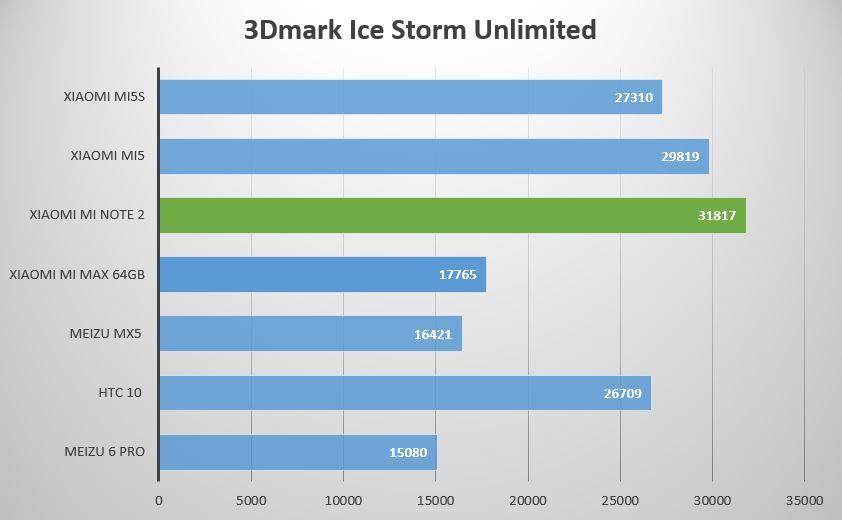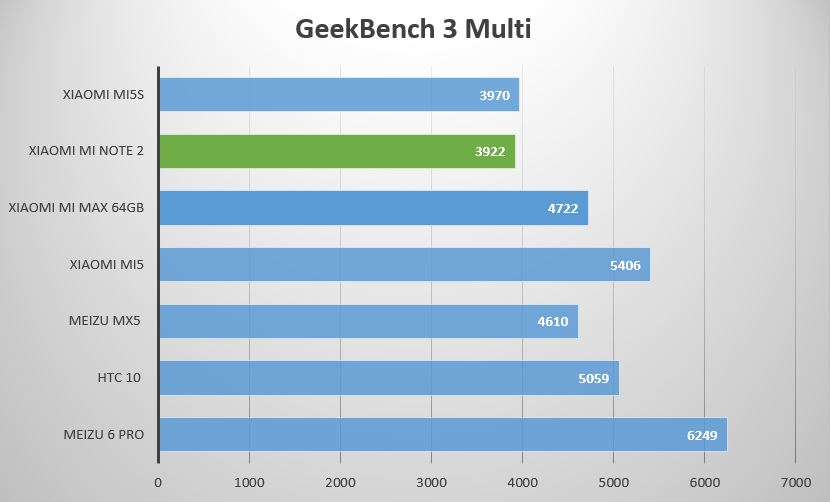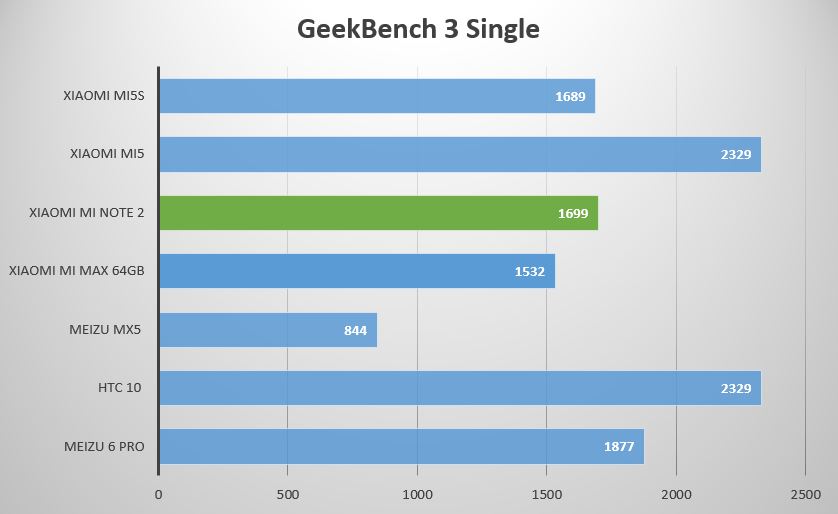Index
Xiaomi Mi Note 2 Specs and Performance
Yes, this is a premium Snapdragon 821 device, and you can choose 4GB or 6GB variants. But hang on. It’s not the only Snapdragon 821 phone in Xiaomi’s stable, not even close. The Mi5s and Mi5s Plus use the exact same tech, as does the pricey Mi Mix.
If you focus solely on performance, you may be inclined to pick up a Mi5s or Mi5s Plus, and if you want something that will turn heads, you’ll probably drool over the bezel-less Mix concept phone. The Note 2 is somewhere in-between. It will get the job done, but it looks pricier than the Mi5 series, but it’s still significantly cheaper than the Mix.
The Mi Note 2 is also Xiaomi’s first “Global” device, and my global we’re not talking about the ROM. The priciest Note 2 variant will feature 6GB RAM, 128GB storage, and support for virtually all 4G/LTE networks on the globe. Unfortunately, this model isn’t out yet and we’re reviewing the Chinese 4GB SKU. On another note, the 6GB/128GB version feels like overkill, but then again, this is a premium device.
Xiaomi Mi Note 2 specs:
- SoC: Snapdragon 821 (MSM8996), 14nm
- CPU: 2 x Kryo at 2.35GHz, 2 x Kryo at 1.6GHz.
- GPU: Qualcomm Adreno 530
- RAM: 4 or 6GB RAM
- Storage: 64/128GB UFS 2.0 internal storage, non-expandable
- Display: 5.7-inch flexible 1080p OLED panel (Yes, OLED, not a Samsung AMOLED panel)
- OS: Android 6.0.1 / MIUI 8.x
- Rear camera: 22.5-megapixel Sony IMX318 1/2.6” sensor, f/2.0 aperture, PDAF, EIS
- Front facing camera: 8-megapixel sensor, f/2.0 aperture, autofocus.
- Battery: 4070mAh lithium ion, non-removable, Type-C, Quick Charge 3.0
- Dimensions: 156.2 x 77.3 x 7.6 mm
- Weight: 166g
- Connectivity: 802.11b/g/n/ac WiFi, Bluetooth 4.2
- Sensors: ambient light, direction, accelerometer, compass, proximity, GPS, A-GPS
- Other noteworthy features: IR blaster
- SIM card: dual SIM (Nano SIM)
- Network support:
2G: GSM B2/B3/B5/B8 ,CDMA: CDMA: BC0
3G: WCDMA B1/B2/B5/B8 ,TD-SCDMA: TD-SCDMA B34/B394G: FDD-LTE B1/B3/B5/B7 ,TDD/TD-LTE: TD-LTE B38/B39/B40/41
(Check regional compatibility prior to making a purchase! Global LTE support applies only to Mi Note 2 Global SKU)
That’s quite a spec, so there’s not much we can complain about (it’s not like we won't try). The Snapdragon 821 doesn’t need an introduction. It’s the best SoC used in Android devices today. Period.
The rest of the package looks almost as good. You get fast UFS 2.0 storage, awesome network compatibility if you go for the Global model, and a big battery with Quick Charge 3.0 support. What about the camera? While 22.5 megapixels sound impressive, the IMX318 isn’t exactly the best Sony sensor you can get today. Oddly enough, the cheaper Mi5s features the 12-megapixel IMX378 sensor, which is somewhat bigger (1/2.3” vs 1/2.6”). In case you’re not familiar with the IMX378, it’s the same sensor used in the latest Google Pixel phones.
So, it doesn’t have the best camera sensor around, and this is not the only cost-cutting measure. The Mi Note 2 features an OLED display, which is a first for Xiaomi. This is not a Samsung panel, it’s a Chinese display, and Xiaomi is apparently sourcing its flexible OLED panels from LG. The downside? A 1080p 5.7-inch display doesn’t sound bad, but this is a Pentile display, so it’s not as crisp as your average LCD display with a traditional RGB matrix.
As you can see, the SD821 has no trouble passing the 140,000 mark in Antutu. However, please note the Mi5 score - it shows that even the old SD820 is still a very potent piece of silicon.
For some reason, Basemark isn't too kind the Snapdragon 821 devices we had a chance to review, as overall performance seems to match that of the SD820. Still, the numbers are quite good, although we don't exactly know why the SD820 scores so well in this test.
If you're looking for awesome GPU performance, look no further. As you can see, the Adreno 530 is capable of delivering exceptional performance, and the Note 2 even outperforms the Mi5s, based on the same processor.
We also got some weird numbers in GeekBench 3. Granted, GeekBench multi-core tests are always skewed in favour of 8- or 10-core processors. For some reason, GeekBench 3 favours the old Snapdragon 820 (Mi5), while Snapdragon 821 devices appear to underperform. This may be a software issue, but in any case it is not indicative or real-world performance.
Bottom line: The Note 2 does not disappoint no matter what you throw at it. This is true of practically all Snapdragon 821 phones, and even somewhat older Snapdragon 820 devices. Some synthetic benchmarks weren't kind to the SD821, but we're pretty sure this is a software issue. Android 7.0 is about to land on Xiaomi's SD82x devices, so the results could be much different in a matter of weeks.
The good performance doesn’t boil down just to Qualcomm’s silicon. The Snapdragon 821 is backed by fast LPDDR4 memory and UFS 2.0 storage, and both make a big difference. In fact, when you check the numbers, you’ll soon realize that most PCs and Macs in use today rely on slower memory, and in some cases, slower storage technology.

